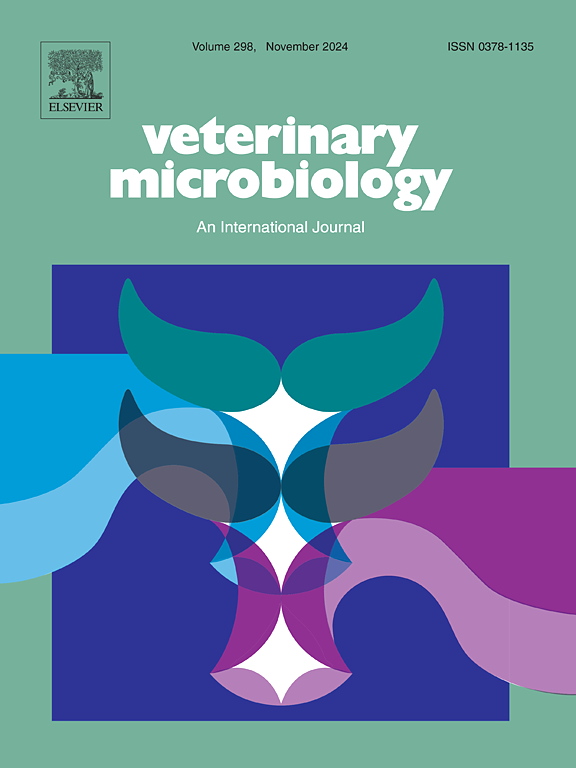The capsid protein p72 specific mAb and the corresponding novel epitope based ELISAs for detection of ASFV infection
IF 2.4
2区 农林科学
Q3 MICROBIOLOGY
引用次数: 0
Abstract
The African Swine Fever Virus (ASFV) poses a significant threat to the global pig farming industry. The major icosahedral capsid protein p72 plays a key role in the assembly of virus particles and infection process. As one major antigen of ASFV, p72 has been widely utilized as a marker for diagnosing infection. In this study, five p72 specific monoclonal antibodies (mAbs) were generated through the immunization of mice followed by cell fusion. Among the five hybridomas, clones 1B7, 2F3, 5D3, and 5D4 recognized a novel epitope of 101FHDMVGHHILGACH114, while clone 1D7 recognized a new epitope, 239GPLLCNIHDL248. Both linear epitopes were found to be highly conserved across all genotypes I and II ASFV isolates, with the first located at the pseudo hexagonal base of the p72 trimer and the latter situated at the FGN insertion loop. The antigenic epitopes were capable of competing with the binding of corresponding mAbs in p72 protein based ELISA, and peptide based ELISA effectively detected ASFV antibodies in clinical samples. Furthermore, we developed and optimized a sandwich ELISA using the mAb 2F3 for efficient detection of ASFV p72 antigen. Our study not only provides valuable tools for assessing p72 function assay, but also lays the foundation for serological diagnosis, prevention and control of ASF.
求助全文
约1分钟内获得全文
求助全文
来源期刊

Veterinary microbiology
农林科学-兽医学
CiteScore
5.90
自引率
6.10%
发文量
221
审稿时长
52 days
期刊介绍:
Veterinary Microbiology is concerned with microbial (bacterial, fungal, viral) diseases of domesticated vertebrate animals (livestock, companion animals, fur-bearing animals, game, poultry, fish) that supply food, other useful products or companionship. In addition, Microbial diseases of wild animals living in captivity, or as members of the feral fauna will also be considered if the infections are of interest because of their interrelation with humans (zoonoses) and/or domestic animals. Studies of antimicrobial resistance are also included, provided that the results represent a substantial advance in knowledge. Authors are strongly encouraged to read - prior to submission - the Editorials (''Scope or cope'' and ''Scope or cope II'') published previously in the journal. The Editors reserve the right to suggest submission to another journal for those papers which they feel would be more appropriate for consideration by that journal.
Original research papers of high quality and novelty on aspects of control, host response, molecular biology, pathogenesis, prevention, and treatment of microbial diseases of animals are published. Papers dealing primarily with immunology, epidemiology, molecular biology and antiviral or microbial agents will only be considered if they demonstrate a clear impact on a disease. Papers focusing solely on diagnostic techniques (such as another PCR protocol or ELISA) will not be published - focus should be on a microorganism and not on a particular technique. Papers only reporting microbial sequences, transcriptomics data, or proteomics data will not be considered unless the results represent a substantial advance in knowledge.
Drug trial papers will be considered if they have general application or significance. Papers on the identification of microorganisms will also be considered, but detailed taxonomic studies do not fall within the scope of the journal. Case reports will not be published, unless they have general application or contain novel aspects. Papers of geographically limited interest, which repeat what had been established elsewhere will not be considered. The readership of the journal is global.
 求助内容:
求助内容: 应助结果提醒方式:
应助结果提醒方式:


